Hawaii is a sight to behold for far more reasons than we can reasonably count, but the beauty and diversity of our wildlife rank mighty high on the list.
A quick look at the statistics shows that our islands’ uniqueness isn’t just all in our heads: at 2,500 miles from the closest landmass, Hawaii is the most secluded archipelago in the world. What’s more, 90% of the species that made it to our spectacular shores are found nowhere else on the planet. Show us rare, and we’ll show you absolutely extraordinary: From Hawaiian Monk Seals to Spinner Dolphins, Hawaii is home to some of the most unusual and remarkable creatures on Earth.
Such creatures aren’t relegated to the sea. The birds in Hawaii may span from scarce to common, but spend a moment outside and you’ll note that they’ll always find a way to make themselves known. Some might flaunt their wings right in front of you; others might require a more watchful eye. Either way, the birds on our island are melodious things, providing the soundtrack for many-a-Mauian’s harmonious life.
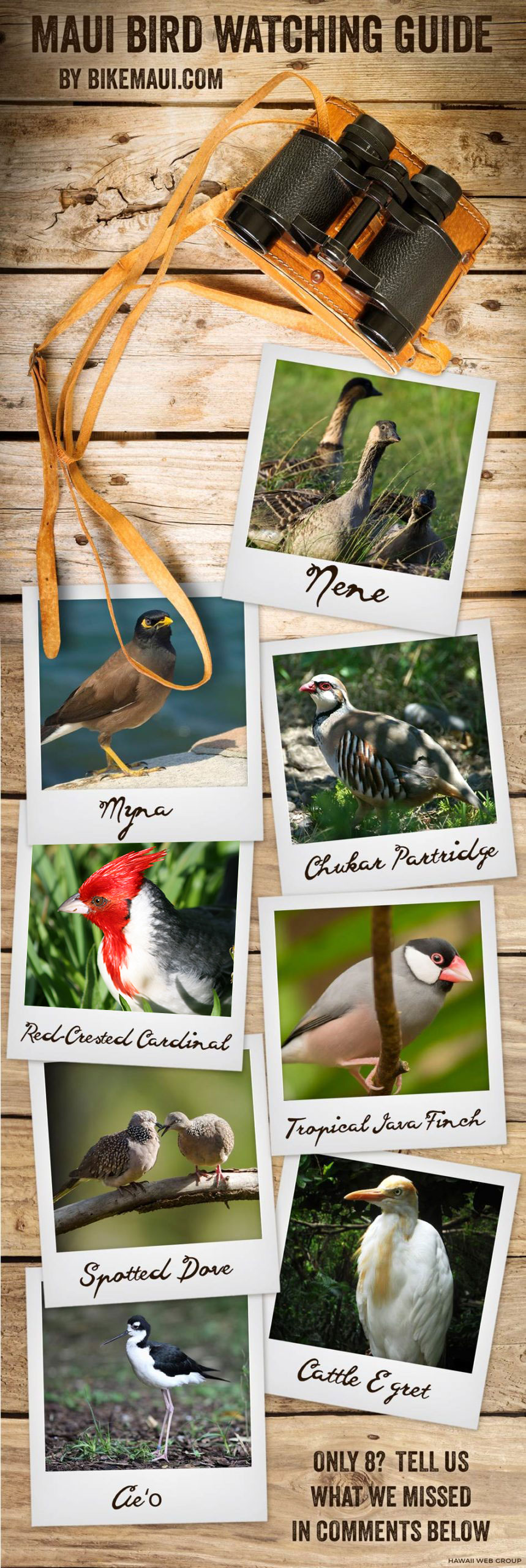
Whether you’re ziplining Haleakala or hiking an untrodden trail, a budding ornithologist or a casual observer, keep an eye out for one of our beautiful birds:
Nene
The Nene isn’t just Hawaii’s official state bird—it’s also exclusive to the islands and considered the rarest goose in the world. Believed to be a relative of the Canada goose, this furrowed-necked mascot was named for its quiet trill. While most Nenes are capable of flight, you’re more likely to see them cruising near ample vegetation. And slow for the signs: Nene Crossings are scattered around the island.
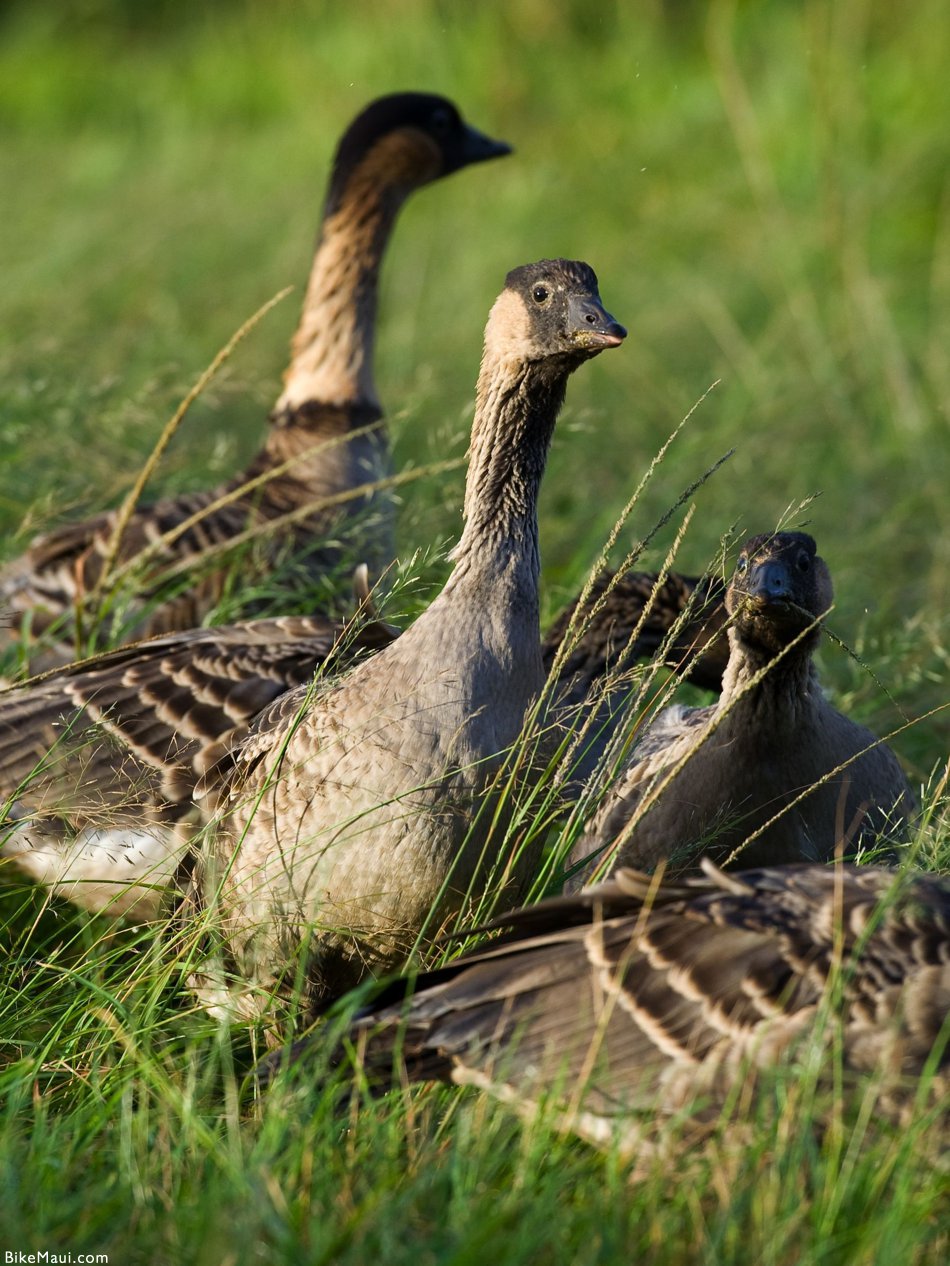
Myna
The Nene might be the official state bird of Hawaii, but few sky dwellers are as evocative of the islands as the myna bird. They whistle while you work, pair for life, breed for several months out of the year, hunt grasshoppers, and, with their communal singing, reign as the chattiest Cathys of the avian world. Originally brought to the islands to combat armyworms in the 19th century, you won’t have to search far to spot one of these gregarious birds: Look for the sunshine-yellow crescents under their eyes.
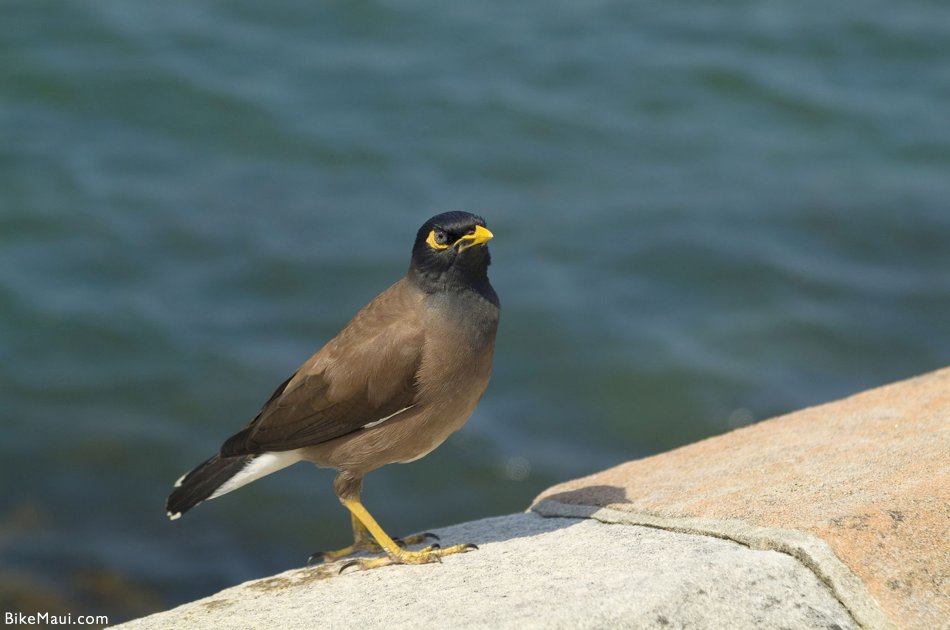
Chukar Partridge
Consider them the homebodies of the winged world: as “upland” ground birds, Chukar Partridges are content cruising across the ground and calling out rallying cries that, quite literally, sound like a series of chucks.
Emblematic of unrequited love in Middle Eastern cultures, it’s said that Chukar Partridges are infatuated with the moon. They’re commonly seen on the slopes of Haleakala, where the clear night skies may suggest they’re closer to the object of their undying affection.
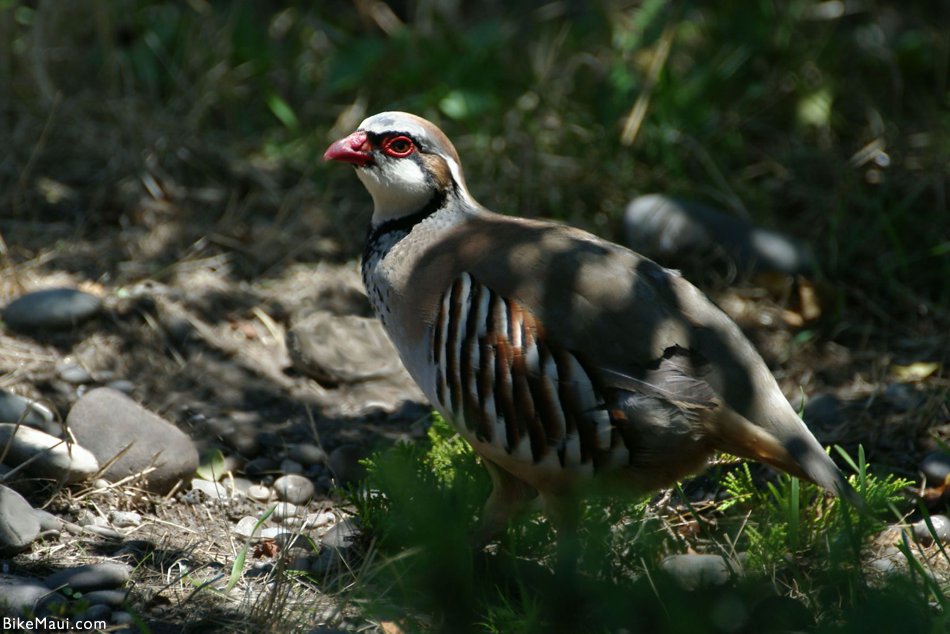
Red-crested Cardinal
This scarlet-breasted beauty thrives in tropical climes, where it feasts on insects and seeds. They’ve been roaming the Hawaiian Islands since 1930 and have served as a ground-skipping songbird ever since. Fun fact: Those with a black bill are typically teenagers and may act like one too—many adult cardinals bring them food, despite their similarity in size. (mahalo for everyone’s patience while we searched for a more accurate image.)
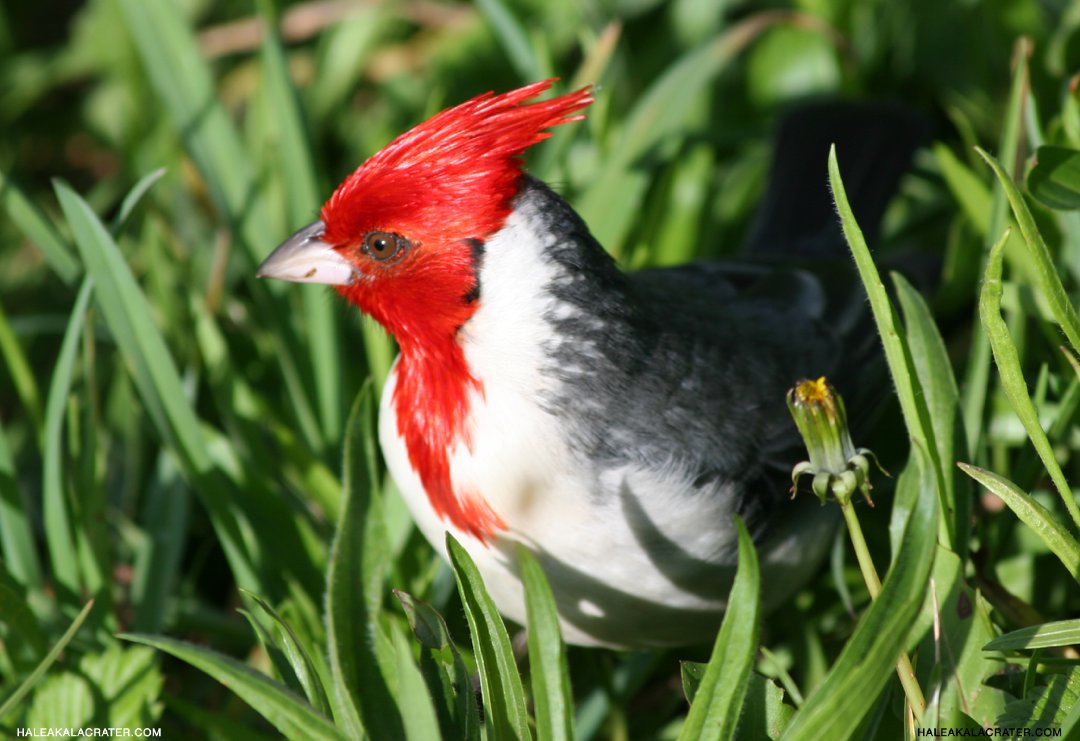
Tropical Java Finch
We know why this caged bird sings in Hawaii: It’s mad about rice, which easily goes down as the islands’ most ubiquitous staple. Petite and convivial, Tropical Java Finches have been household centerpieces and the subject of paintings for centuries, often creating tight bonds with their human owners. Out in nature, look for their blush-hued bellies and listen for their distinctive trill, which sounds just like a high-pitched chip.
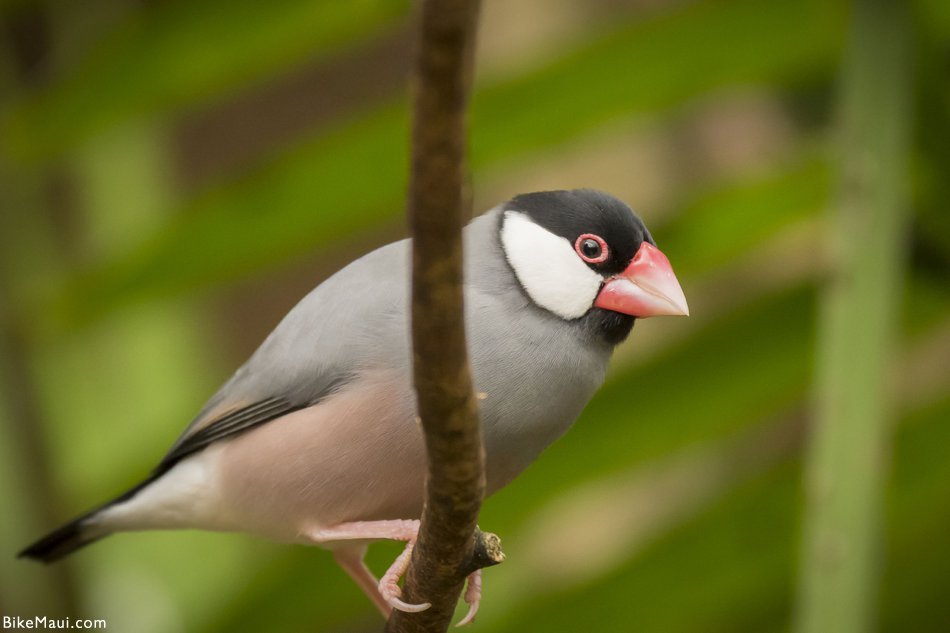
Spotted Dove
With its elongated tail and polka-dot necklace, this Chinese starlet travels with an entourage and is often detected by its dramatic displays of flight. Renowned for its unmistakable and oh-so-charming coo, the Spotted Dove was introduced to Hawaii in the late 1800s and has since become one of the most prevalent birds on the islands. As with most ingénues, it gravitates towards human habitations, thereby taking the guess out of the game for avian spectators.
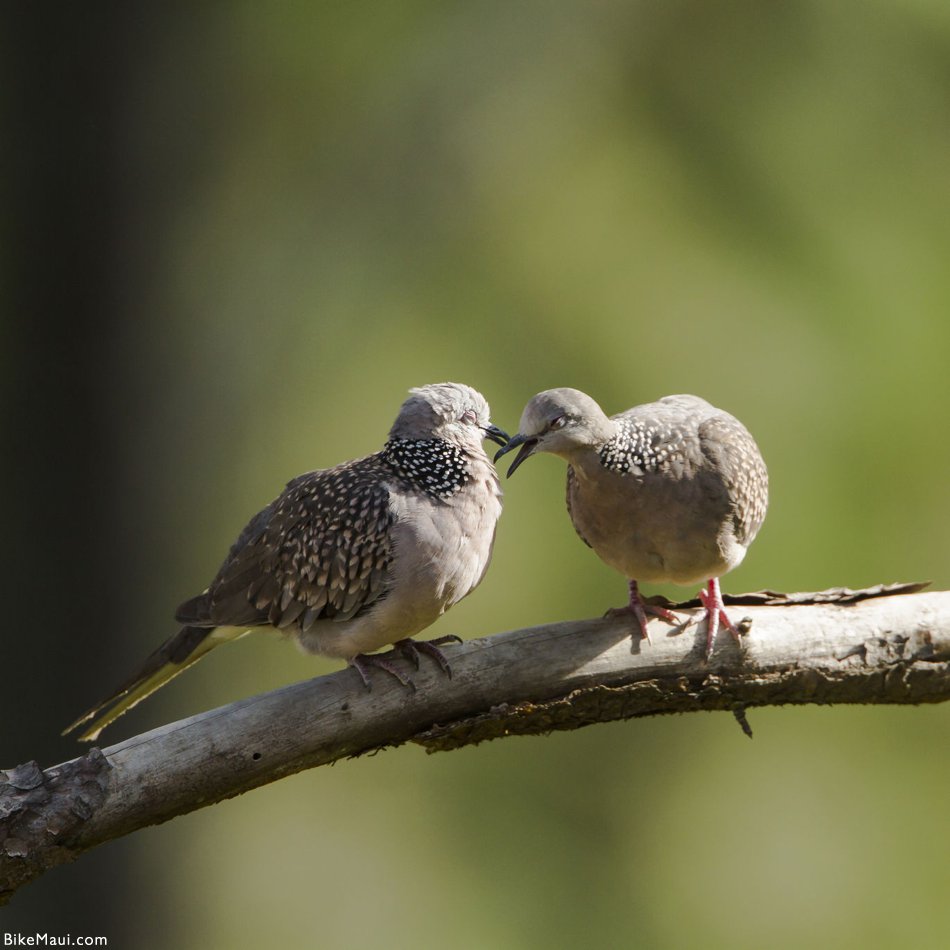
Cattle Egret
Bright and white, this leggy beauty is often seen strutting near salt marshes or hunting for moths on one of Maui’s many golf courses. Originally brought to the islands by cattle ranchers for agricultural pest control in the late 1950s, Cattle Egrets feast on everything from crickets to toads. But don’t let their fine-winged elegance fool you: due to their rapid expansion and love of the islands, they’ve placed more than a handful of endemic Hawaiian species at risk.
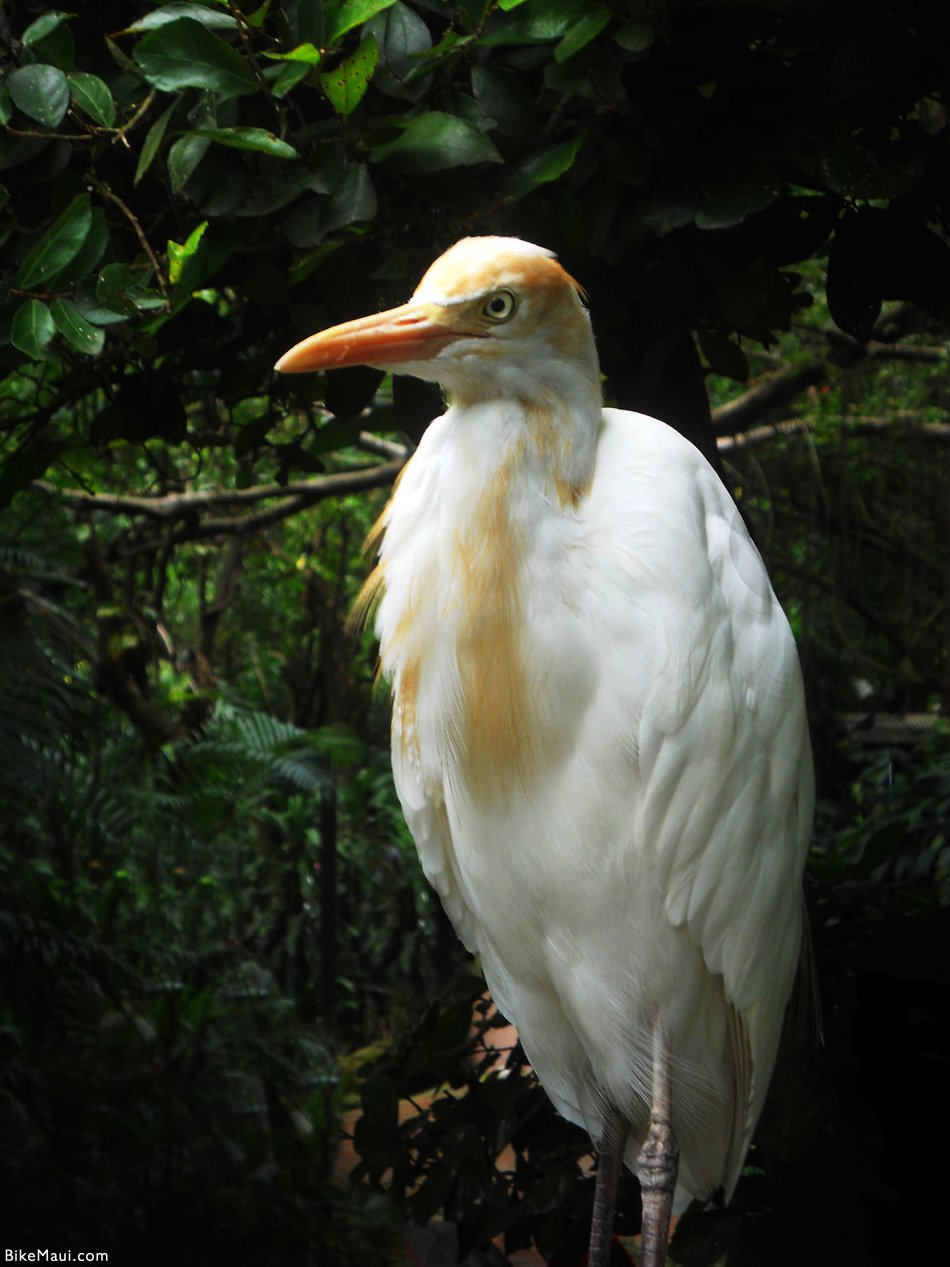
Ae’o (Hawaiian Stilt)
Spot a Hawaiian Stilt? Consider it an auspicious sign: this gangly but graceful bird is currently on the federal list of endangered species. Usually found in wetlands, Ae’os possess spindly, pink legs—among the longest of birds in the world—and slender black necks. Territorial and aggressive, they exhibit one of the smartest strategies to ward off predators: they band together, hop like mad, flap their wings, and let loose a shrill communal cry, disarming humans and enemies alike.
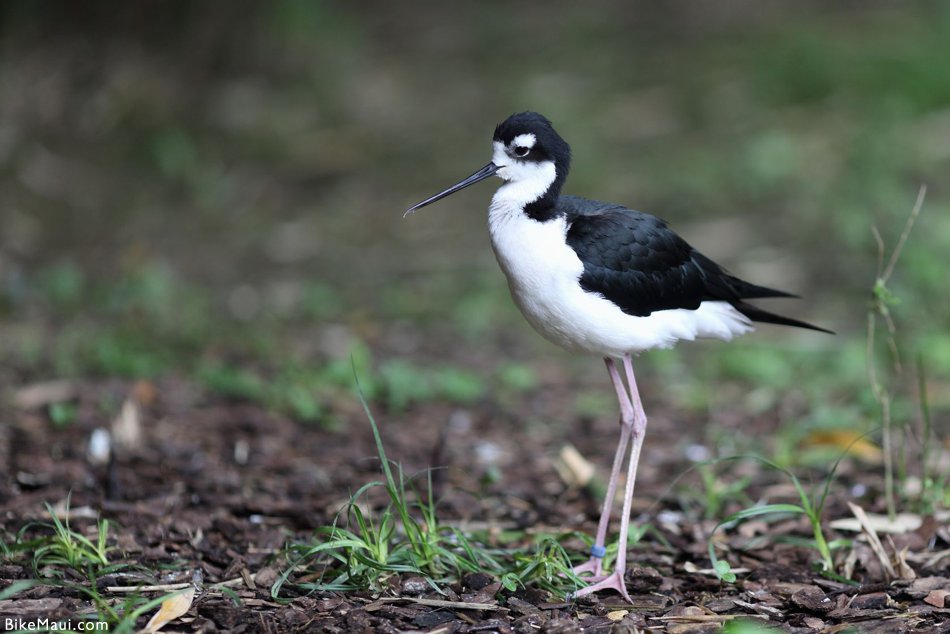
Gray Francolin
Francolin pheasants, though not native to Hawaii, have become a prominent avian presence on the islands. Introduced in the mid-20th century for recreational hunting, these charming birds have successfully adapted to the lush tropical environment. The most common species in Hawaii is the Gray Francolin (Francolinus pondicerianus), recognized by its distinctive mottled plumage and a resonant, melodic call that echoes through the forested hillsides. Despite being non-native, they have integrated into the ecosystem, foraging on a diverse diet of seeds, insects, and vegetation. Conservation efforts are now focused on understanding the impact of these introduced species on native flora and fauna, as well as finding a balance to ensure their coexistence with the unique and delicate Hawaiian biodiversity. On Maui, they are usually found in the lower, drier regions of Haleakala, especially in open areas close to Hotel properties.
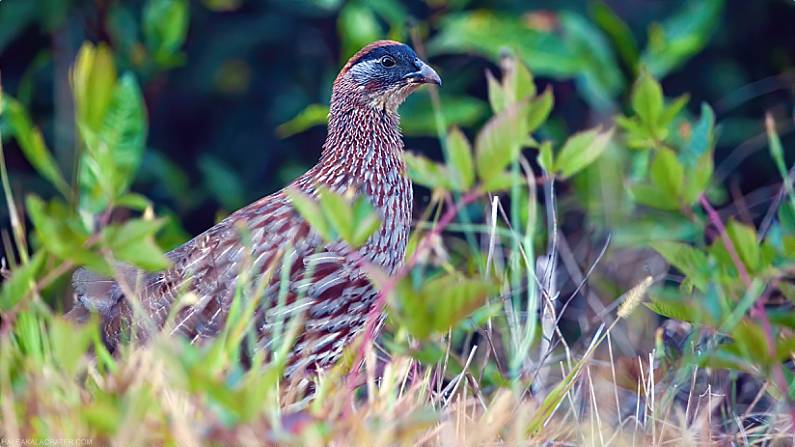
Let us know which birds we missed! There’s so much to see when bird watching on Maui, so ask us questions! ALOHA!
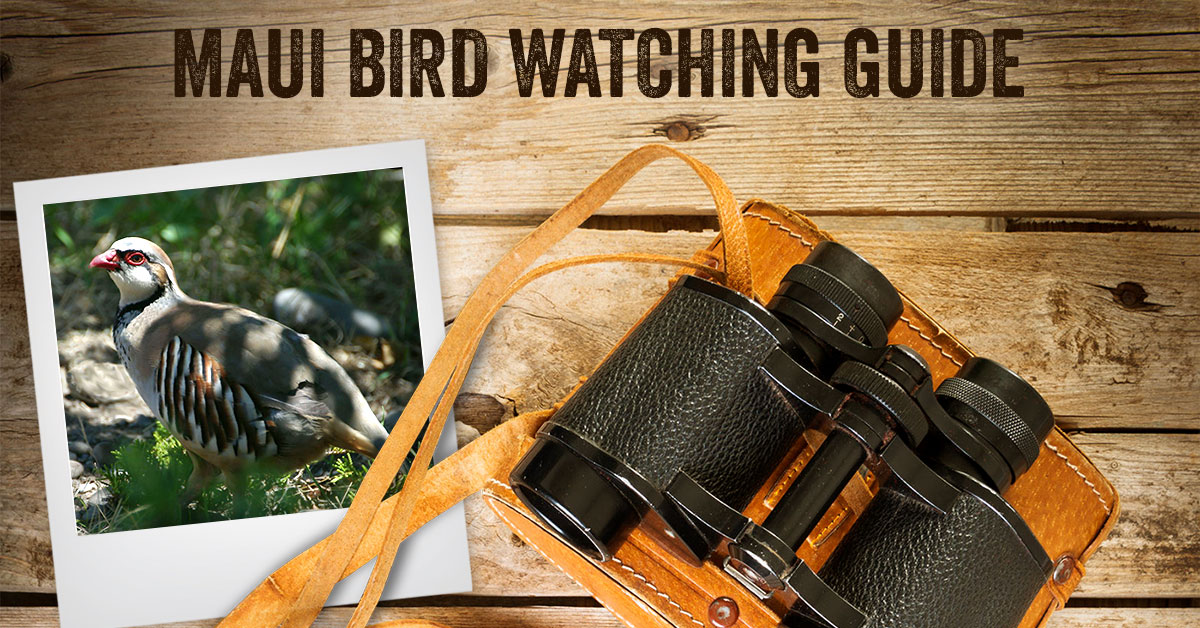



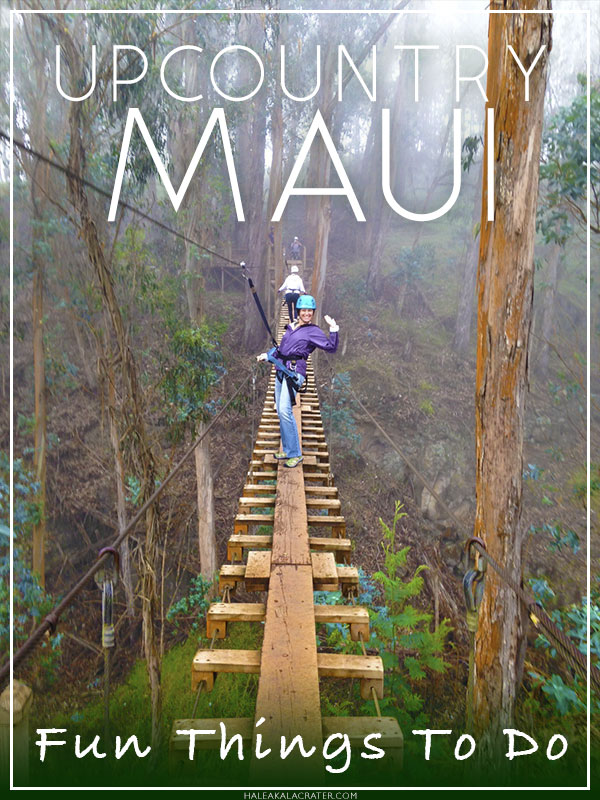
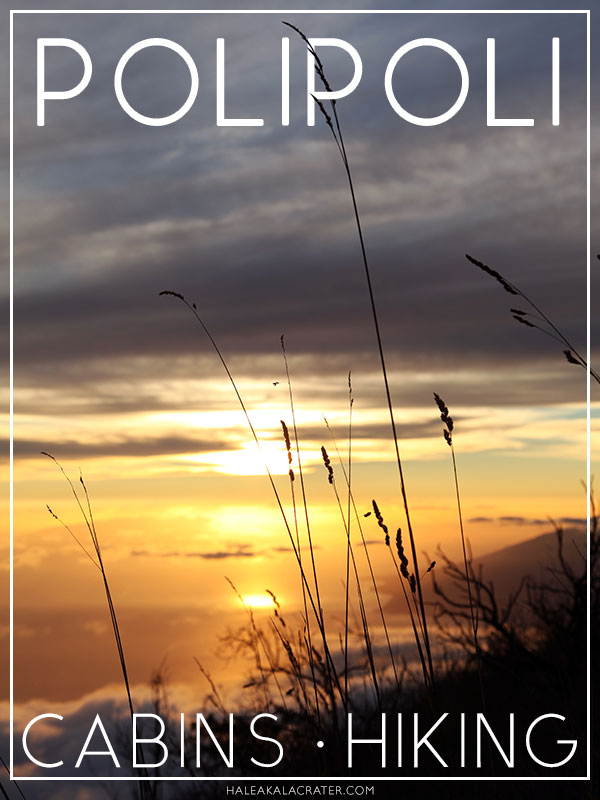

It’s Canada Goose, not Canadian Goose.
Thank you, Kim! We’ve corrected it. ALOHA!
Nutmeg manekins can be seen in the grass alongside the N Kihei boardwork. (Thank you Yolanda for pointing them out).
Always wind your windows down when going across the meadows above Up Country to hear the larks singing.
Zebra dove
Sitting on the patio on the fourth floor of the Kahana reef hotel the sunset was over the sky was getting dark and a large bird, seemingly 2 to 3 foot wingspan wing tips were pointy quickly soared by turning so it didn’t hit a palm tree and then disappeared over the sea it did not flap Its wings. Could it have been a petrel it seemed too streamlined to be a night heron and too quick to be an owl and also too big of a wingspan for a Hawaiian owl?
I believe it was a heron.
Most likely a Great Frigate or Brown Booby.
How about the grey frankolin?
The photo is of a northern cardinal, not a red-crested cardinal
Thank you, Tracy! We couldn’t find a photo of the red-crested cardinal that we had rights to use. If you have one, and are willing to let us share it, we’d love that! Mahalo!
I have a photo of a red-crested cardinal
We got one already, but I really appreciate everyone offering! Mahalo!
Please add The Melodious Laughing Thrush. We have 3 that have a nest in our Haiku yard. Beautiful songbirds!
There’s a large handful of them around the Melodious Laughing-thrush around the Kapalua Duck Pond along the hiking trails. I have photos of needed to add to the list. Quite beautiful as well as their song.
What is the chickadee/sparrow sized bird with a reddish head top and ruby breast? Beak is short and powerful, but not as any of the pictured birds. Usually seen accompanied by similar sized more drab colored birds. The bill has a white stripe. Amazingly loud complex song.
Sounds like a male House Finch with the red and a female House Finch with drab colors.
Thx for providing bird pics. I made the effort to get a shot of a red crested Cardinal that you may use if you like. Where to send it??😊
Driving down Haleakala this afternoon we saw a hawk hunting, then not long afterward I saw a sea eagle also hunting.
That’s amazing! LUCKY YOU! Thanks for sharing.
Red-billed leiothrix or Hill Robin in Makawao Reserve
I have several photos of red-crested cardinal on my Flickr page. Feel free to use any or all under Creative Commons license.
Aloha!
Our second time to Maui. Our first was 2 years ago. If you go to Lahaina at dusk, you will see the Mynas coming in to roost for the night in the big tree right near the square. This was first 3 weeks in January.
I have a purple Martin colony in Ontario Canada where the Martins come for 4 months out of the year usually first week of April until mid August. One thing I noticed this time was English house sparrows. These birds are non native and aggressive. I don’t know who brought them there?
Pueo (Hawaiian owl), Alala (Hawaiian crow), many more:
thespruce.com/hawaii-bird-species-4774573
We have Brazilian Cardinal at our home on Maui.
Lorikeets abound in Trees in South Maui
Do you still have the Alala’ (Hawaiian Crow). They were rescued at an area on the Big Island and relocated to Maui. My husband played a big part of it. Just curious if the made it
Just saw 2 nene fly over our house on upper kula highway- a first in 50 years! Nice change from Pueo, Kolohala and Francolin.
Not so nice for wild chickens and egrets in back pasture!!
Where’s the chicken picture?
oh man, we blew it!
What is the black bird about the size of a common starling that shows white on it’s wings when it’s flying? We just came back from Maui and it reminded me of a mocking bird that we have here in PA.
Warbling white-eye is a bird I see all the time in Kula. I also see the common waxbill a lot too.
I could have swore I saw a re breasted goose at Haleakala yesterday afternoon. I saw that face and coloring. Later saw nene at parking. Perhaps it was a pheasant, I did see a male in green plumage a bit later…
This is a common myna
There are MANY Rosy-Cheeked Lovebirds from Kam 3 to Wailea.